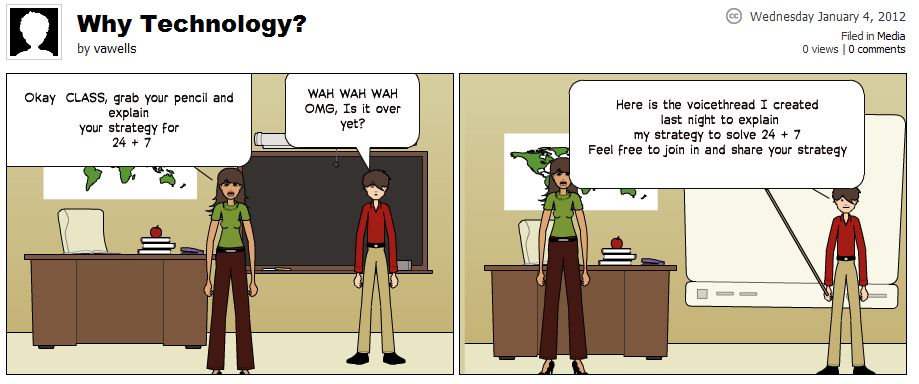It was desperation that motivated me to use technology in a grade 3 curriculum. I was faced with a classroom full of students who were reading and writing below grade level and who had weak numeracy skills. Of the 19 students, only 4 were able to work with grade level material. The class was made up of mostly boys who had major attention issues. School was hard and they had disengaged from the learning process. Learning was not happening in my room, students were constantly in trouble.
This group of students were expected to write Math and Language Arts CRT’s in May and I didn’t know how to prepare them. We had an ancient, slow, rebuilt computer in the classroom that I noticed my students used. This group of students were engaged in videogames, and texting, outside of the school setting, yet in school these tools were not available to them.
Traditional teaching wasn’t working but they were showing an interest in the computer so that was a place to start. This moment in my teaching spurred my interest in using technology with students. I had very little experience with computers or technology but I had a real desire to engage this group of students in meaningful learning activities and a good self preservation instinct.
I was given a projector and brought in my own laptop to use with it. After much discussion with the school administration and many classroom observations, by the principal, of the increased student engagement in learning I was given a Smart Board. I spent hours outside of school time teaching myself how to use the board as interactively as possible. This group of students learnt right along with me. They were engaged in the learning process, attending to abstract concepts, recording strategies used to solve problems on the Smart Board and generally using the language of learning, learning was beginning to occur.

These positive results inspired me to delve deeper into using technology with students, putting technology into the hands of students to enhance their learning. This experience is the reason I decided to enrol in the MET program to further my knowledge.
The more involved I got in using technology the more questions I had. What criteria to use to choose the technology? How to use technology to empower students to be active participants in their own learning? What innovative ways can I integrate technology into math, science and other curriculum areas to enhance student learning? How can I use technology to differentiate instruction and assessment? How do I keep pace with new technologies? How to use technology to inform and engage parents in their child’s learning? So many questions brought me here. Gradually each course I completed in the MET program strengthened my knowledge base.
Looking back at this group of students and the effect technology had on enhancing their learning environment I continue to question the best methods for promoting the use of technology in classrooms to support active learning and assessment. How do we put the technology into student hands and provide support for both teachers and students?
